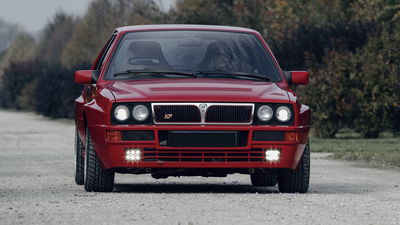A Brief History Of Tubeless Tyres: A Car’s Most Underappreciated Feature

Tyres have been essential for grip and comfort since soon after cars as we know them were first invented. Horseless carriages were starting to achieve higher speeds and wooden wheels were neither strong enough nor comfortable enough to cope on the unmetalled roads of the era.
Metal-covered wheels were no good either; there was no comfort improvement there. A cushion around the lighter wooden option was necessary instead. The first pneumatic rubber tyres came along after ineffective leather and metal wrappings had come up short. Scottish vet John Boyd Dunlop of Belfast, Northern Ireland, in 1888 developed a resilient rubber ring that fitted tightly to a wheel rim and could be inflated by means of an inner tube.
Let’s not get bogged down in history’s uncomfortable truth that Dunlop didn’t actually get there first (it was actually another Scot, Robert William Thomson who got there over 40 years before, but couldn’t make the rubber withstand normal use). Dunlop’s breakthrough set off a chain reaction around the world as proper pneumatic tyres spread from continent to continent.
The problem with early tyres was their inner tubes. Made the only way they could be, from fragile rubber that was vulnerable to sharp objects and pinching, flat tyres fast became a fact of motoring life and one of the chief reasons the motoring gentry would often carry a mechanic with them whenever they drove anywhere.

What exactly were (and are) the advantages of tubeless? First of all, punctures are less likely. Tubeless car tyres are built with a strong outer casing by default, making them more resistant to the stabs and cuts of not just stones, but shards of glass, nails and more that litter the streets. Anyone who has run a motorbike daily for any length of time most likely knows the puncture penalty you pay for the softer rubber necessary on a two-wheeler. Car tyres are harder, and therefore tougher to pierce.
Also on the theme of flats, while tubed tyres tend to deflate more or less instantly, punctures in tubeless tyres tend to be slow enough that you can try to reach your destination or a garage before the tyre goes too flat, at which point you need to pull over unless you fancy wrecking your wheel rim. Tyre Pressure Monitoring Systems (TPMS) on modern cars will tell you about a significant change in pressure.

It’s not always the case that you’ll have time, and many people still have to deal with instant deflations. But ‘run-flat’ tyres are now built with sidewalls that are strong enough to withstand being driven flat for 50 miles at 50mph in the case of the class-leading Bridgestone Driveguard options. Most run-flats have a limit of 30 miles at 30mph.
Surprisingly it took 40 years from Dunlop’s landmark discovery for anyone to make a tubeless tyre work well enough to bother patenting one in the motor car’s booming European markets. Most designs still used natural rubber, which was too soft and allowed air leakage, until BF Goodrich came along immediately after WWII with a functional synthetic butyl rubber, which was harder and less prone to leakage but had proved tricky to manufacture since its discovery in the 1920s.

About a decade after butyl rubber reached the public, tubeless became the universal standard on almost all new cars, although the US market persisted with cross-ply or bias-ply designs until the late 1960s, long after Europe had fully adopted Michelin radial construction patented in 1946.
For the last 50 years or so the world’s tyre makers have all been treading the same basic path - whether it’s for low-rolling resistance eco boots or semi-slick track tyres. Radial construction and tubeless are now so ingrained into the ideal design standards that it’s unlikely anything else will be considered for as long as the concept of the wheel as we know it lasts.













Comments
nice article keep it up
This is a wheely cool story, thank you!
That just made my day better XD
Hey. I think i can speak for everyone but we’re all tired of these puns.
Ill let myself out
youre a wheel nutjob to be making such puns
My bike is tubeless, also the tires are lighter tubeless
That’s a slick story :)
It was a rubbery article. Gripping.
As a mountain biker, tubed tires are the bane of my existence. Saving up for tubeless tires